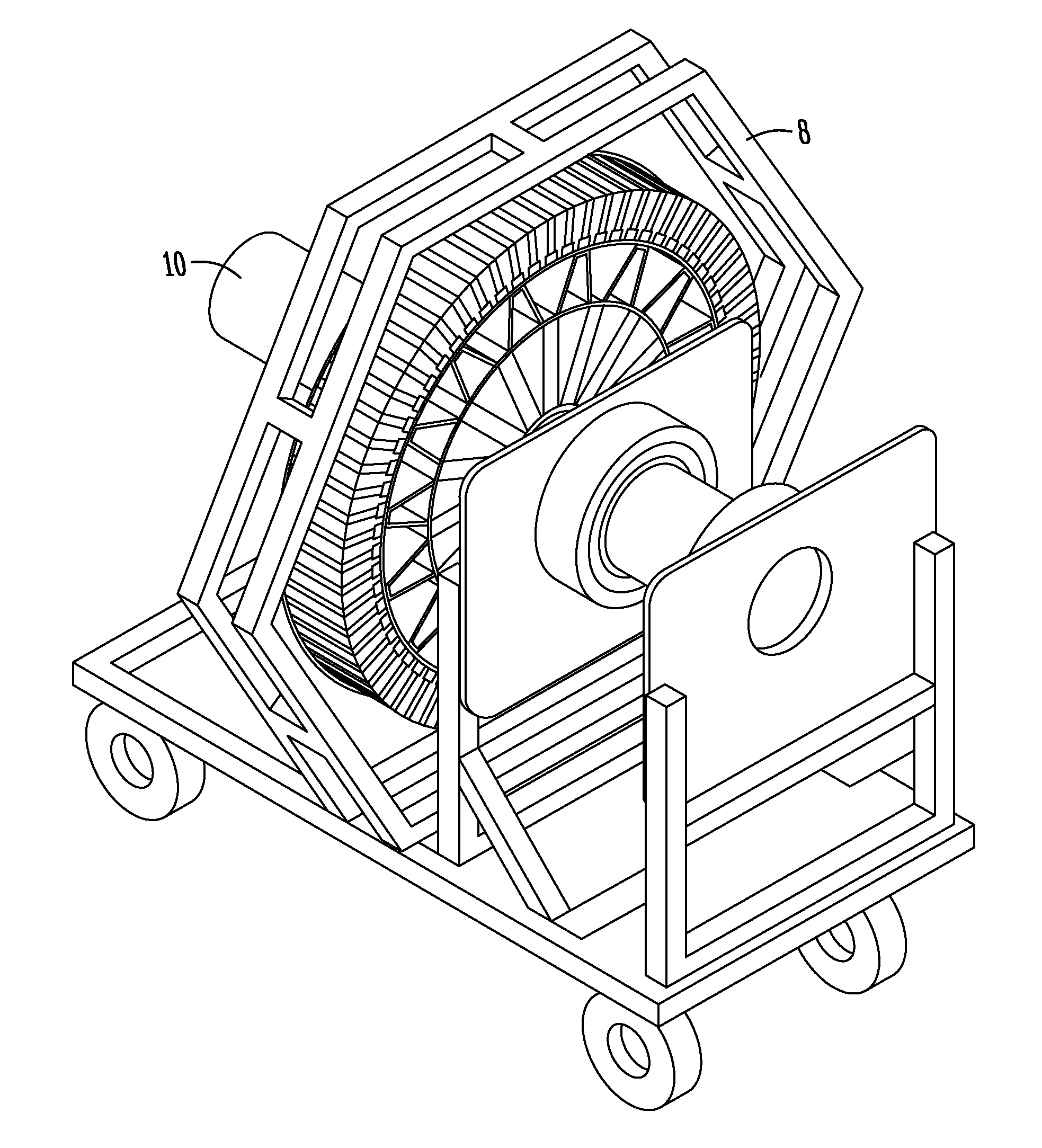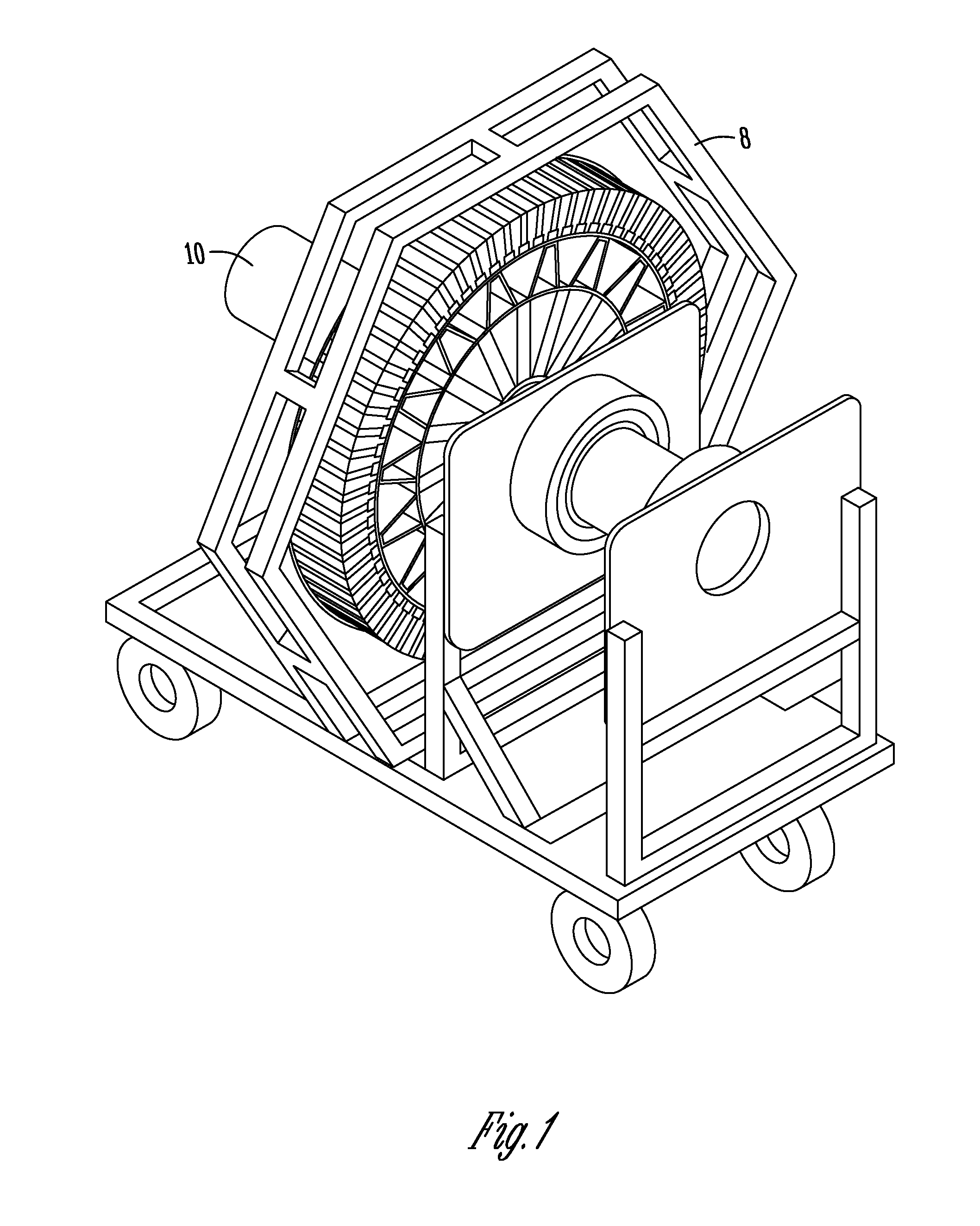Direct drive wind turbine and blade assembly
a direct drive, wind turbine technology, applied in the direction of magnetic circuit rotating parts, electric generator control, magnetic circuit shape/form/construction, etc., can solve the problems of increasing deployment costs, unfavorable use of wind turbines in more of a residential and rural setting, and unduly shortening the service life of wind turbines, so as to reduce cogging torque reduce cogging torque
- Summary
- Abstract
- Description
- Claims
- Application Information
AI Technical Summary
Benefits of technology
Problems solved by technology
Method used
Image
Examples
Embodiment Construction
[0030]FIGS. 1 and 2 illustrate an isometric view of the electrical generating component of the wind turbine assembly according to an exemplary embodiment of the present invention. For purposes of illustration and even demonstration, the electrical generating component of the wind turbine assembly is shown mounted to a portable cart 8. The electrical generating component of the wind turbine assembly can take on various operational configurations as the design of the component is truly scalable up or down based on the desired electrical output.
[0031]FIGS. 1-6 illustrate the various possible components and configurations for the wind turbine assembly. Each of the possible components for one embodiment of the wind turbine assembly is best illustrated in the exploded and sectional views shown in FIGS. 2 and 3.
[0032]The basic structure of the wind turbine assembly, according to an exemplary embodiment of the present invention, has a central shaft 10 connecting the blade assembly to the wi...
PUM
 Login to View More
Login to View More Abstract
Description
Claims
Application Information
 Login to View More
Login to View More - R&D
- Intellectual Property
- Life Sciences
- Materials
- Tech Scout
- Unparalleled Data Quality
- Higher Quality Content
- 60% Fewer Hallucinations
Browse by: Latest US Patents, China's latest patents, Technical Efficacy Thesaurus, Application Domain, Technology Topic, Popular Technical Reports.
© 2025 PatSnap. All rights reserved.Legal|Privacy policy|Modern Slavery Act Transparency Statement|Sitemap|About US| Contact US: help@patsnap.com



